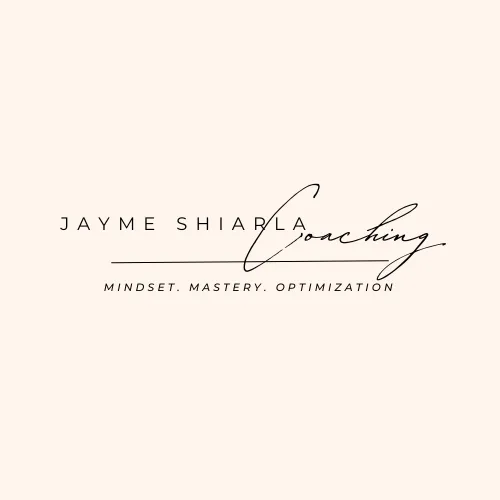
Understanding Avoidance Personality for High Achievers: Why Success Doesn’t Mean You’re Free from Avoidant Patterns—and What to Do Next
Introduction: The Paradox of High Achievement
Walk into any room of top performers—executives, founders, clinicians, athletes—and you’ll find a pattern that rarely gets named: some of the most disciplined, productive, and outwardly “together” people are quietly struggling with avoidant patterns beneath the surface.
Maybe you’re the person who always hits deadlines, tracks every macro, and has a system for everything—yet certain parts of life feel off-limits, risky, or perpetually “on hold.” You might tell yourself it’s just your “independence” or “standards,” but the reality is that avoidance isn’t about laziness or lack of drive. For high achievers, it’s often a hidden operating system, running the show in relationships, emotions, and even leadership.
This article is for you if you’ve ever wondered:
Why am I so competent in my career but feel flat or restless emotionally?
Why do I struggle to ask for help or open up—even when I want to?
Why does “next-level” growth feel like it’s just out of reach, no matter how much I accomplish?
Let’s break it down.
What Is Avoidant Personality? (And Why It’s Different for High Achievers)
When most people hear “avoidant,” they imagine someone who flakes on plans, avoids responsibility, or is afraid of hard work. But avoidant personality patterns are much more nuanced—especially for high performers.
Avoidant patterns are adaptive strategies the nervous system creates to minimize perceived threat or discomfort. For many high achievers, these patterns were built early: perhaps you grew up needing to be emotionally self-sufficient, rewarded for performance but not vulnerability. Over time, achievement became a safe space—while emotional openness, asking for help, or slowing down felt dangerous or foreign.
Common Avoidant Traits in High Achievers:
Hyper-independence: Pride in “handling everything yourself,” even to your own detriment.
Emotional distance: Feeling flat, disconnected, or uncomfortable with intimacy, even with close friends or partners.
Avoidance of vulnerability: Over-relying on competence and facts, avoiding conversations or situations where you might not have the answer.
Perfectionism and busyness: Filling your calendar and to-do list to avoid quiet moments or difficult feelings.
Procrastination on personal goals: Mastering professional achievement but avoiding the work of deeper self-reflection or personal growth.
These patterns aren’t random—they’re a nervous system adaptation to earlier experiences where “being too much,” “needing too much,” or “showing weakness” was unsafe.
Misconceptions About Avoidance in Successful People
Let’s clear the air. Avoidant patterns in high achievers are widely misunderstood. Here are some of the most common myths:
Myth 1: Avoidance means you’re weak or undisciplined.
Truth: Avoidance is often built on over-control and hyper-discipline. The person who’s running marathons and closing deals may be avoiding emotional risks—not physical or mental ones.
Myth 2: Successful people don’t have attachment wounds.
Truth: Achievement can mask deep-seated insecurities or emotional disconnection. The world sees your results; it rarely sees your internal world.
Myth 3: If you avoid intimacy, it’s just “how you are.”
Truth: Avoidant patterns are learned—not fixed. They’re adaptive strategies, not core personality.
Myth 4: More effort will fix avoidance.
Truth: Doubling down on willpower and hustle usually makes avoidance worse, not better. The pattern isn’t about not trying hard enough—it’s about where you’re directing that effort.
How Avoidance Actually Shows Up
1. At Work
You’re the go-to problem solver but rarely share your own struggles.
Feedback feels threatening, so you default to “just doing it yourself.”
You resist delegation—not because you don’t trust your team, but because needing others feels risky.
2. In Relationships
You choose partners who are emotionally unavailable—or you become the unavailable one.
Intimate conversations feel draining, boring, or even annoying.
When conflict arises, your first instinct is to withdraw, shut down, or get “busy.”
3. In Personal Growth
You invest in courses, books, or therapy but keep it intellectual—avoiding deeper emotional exploration.
You set big goals for health, fulfillment, or purpose, but secretly sabotage by procrastinating or making excuses.
You compare yourself to others, but struggle to articulate what you actually want.
4. In the Body
Chronic tension, shallow breathing, restlessness.
Difficulty sitting still with uncomfortable emotions or sensations.
Using exercise, work, or routines to “outrun” anxiety or discomfort.
Why These Patterns Persist—Even When You’re Self-Aware
If you’re reading this, you’re probably already self-aware. Maybe you’ve read every book, done the self-help, even had therapy—but avoidance persists. Why?
Avoidant patterns are nervous system habits, not just mindsets.
Your brain is wired to protect you from what it perceives as dangerous. If vulnerability once felt unsafe (emotionally or even physically), your nervous system learned to shut it down through withdrawal, intellectualizing, or busyness.
Achievement reinforces avoidance.
You get rewarded for results, not for emotional risk-taking. The world validates your productivity—rarely your presence. So the cycle continues: achievement, recognition, deeper avoidance.
Breaking the Cycle: Moving from Avoidance to Real Growth
Awareness is step one, but change requires new experiences—not just new information. Here’s how to start:
1. Name and Track Your Avoidant Patterns
Start by observing—noticing the moments you withdraw, deflect, or distract. Track:
What situations trigger avoidance?
What do you feel in your body right before you check out?
How do you justify it (“I’m just busy,” “Now’s not the time”)?
Keep a simple log for a week. Don’t judge—just get curious.
2. Titrate Vulnerability (Don’t Flood Yourself!)
Jumping into radical openness is a recipe for overwhelm. Instead:
Choose one safe relationship and practice sharing a little more than usual—a feeling, a doubt, a hope.
When you feel the urge to pull back, name it out loud (“I notice I want to avoid this”) and see if you can stay present for just 30 seconds longer.
Remember: growth happens at the edge of your comfort zone, not in the panic zone.
3. Practice Embodied Presence
Avoidance often happens in the body before it’s a thought.
Try this:
Setting aside 10 minutes a day for “no-escape time”—no phone, no tasks, just sitting with whatever comes up.
Notice sensations (tightness, fluttering, restlessness). Breathe into them rather than pushing them away.
Use grounding techniques: name 3 things you see, 2 you hear, 1 you feel.
4. Redefine Strength: Ask for Small Help
Every time you ask for something you could do yourself, you challenge the belief that needing others is weak.
Make a micro-request this week (ask for advice, feedback, a favor).
Notice your internal reaction—fear, shame, relief?
Journal about what happened. Did the world end? Or did you build trust?
5. Focus on Progress, Not Perfection
Breaking avoidant patterns is slow work. Celebrate tiny wins: the conversation you didn’t dodge, the emotion you named, the moment you chose presence over distraction.
The Benefits: What Changes When You Do This Work
When you start to shift avoidance into presence, several things happen:
Deeper relationships: You feel seen—and you see others—beyond roles and achievements.
Less anxiety, more calm: Avoidance is exhausting. Presence is sustainable.
Authentic leadership: You lead with congruence, not just competence. People trust you more.
Personal fulfillment: You start setting and achieving goals that actually matter to you, not just what looks good on paper.
Increased capacity for discomfort: You don’t need to run from tough emotions or uncertainty—you can handle them.
Avoidant Patterns Aren’t a Life Sentence
If this article feels uncomfortably familiar, you’re not broken. You’re human—and you’re in good company.
Avoidance isn’t a moral failing or personality flaw. It’s a brilliant, resourceful adaptation to life’s challenges. But what protected you before might be what limits you now.
The good news? With awareness, practice, and sometimes support, you can rewire your approach.
Start tracking, not judging.
Titrate vulnerability—don’t flood yourself.
Bring your body into the process, not just your mind.
Redefine asking for help as an act of strength.
Celebrate every step into presence.
You’ve already achieved so much. Imagine what’s possible when you stop avoiding and start showing up—fully, for yourself and others.
Want to go deeper?
If you’re ready to break old patterns and unlock your next level of leadership and fulfillment, book a complimentary discovery session HERE.
If you are interested in learning more about how much this impacts you, take the FREE QUIZ here.
Your next breakthrough isn’t about working harder. It’s about getting real—with yourself.

